28 july 2015

On Tuesday morning, the Israeli Occupation Forces (IOF) opened heavy fire at Palestinian fishing boats off the coast of the Sudania area, north of Gaza City.
Local sources reported that the gunboats fired indiscriminately at the fishermen’s boats. There were no reported injuries.
This is the third time Israeli Occupation Naval Forces have opened fire at Palestinian fishermen off the coats of Gaza in the past three weeks.
These attacks have been ongoing since the fire truce between Israeli occupation authorities and Hamas in Gaza, following the 51-day attack on Gaza which killed over 2,200 people.
Local sources reported that the gunboats fired indiscriminately at the fishermen’s boats. There were no reported injuries.
This is the third time Israeli Occupation Naval Forces have opened fire at Palestinian fishermen off the coats of Gaza in the past three weeks.
These attacks have been ongoing since the fire truce between Israeli occupation authorities and Hamas in Gaza, following the 51-day attack on Gaza which killed over 2,200 people.
27 july 2015
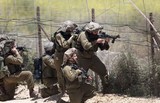
The Israeli Occupation Forces (IOF) carried out Monday morning a limited incursion into the east of Gaza city, Quds Press reported.
Five Israeli military vehicles moved from Nahal Oz military site into Shujaiya neighborhood amid heavy shooting at Palestinian farmers in the area, the sources added.
No casualties were reported during the attack.
Meanwhile, Israeli Navy forces opened fire at Palestinian fishing boats while sailing off the Gaza coast on Monday morning.
The fishing boats were forced to go back to shore after the Israeli attack. No injuries were suffered.
The incident is the latest in the series of Israeli violations of the ceasefire reached between Israel and Palestinian resistance under Egyptian mediation on August 26, 2014.
Five Israeli military vehicles moved from Nahal Oz military site into Shujaiya neighborhood amid heavy shooting at Palestinian farmers in the area, the sources added.
No casualties were reported during the attack.
Meanwhile, Israeli Navy forces opened fire at Palestinian fishing boats while sailing off the Gaza coast on Monday morning.
The fishing boats were forced to go back to shore after the Israeli attack. No injuries were suffered.
The incident is the latest in the series of Israeli violations of the ceasefire reached between Israel and Palestinian resistance under Egyptian mediation on August 26, 2014.
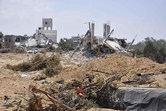
Israel's war on the Gaza Strip in the summer of 2014 caused complete or partial destruction to 60 percent of the homes in al-Zaneh area, east of Khan Younis, according to the municipal council of Bani Suhaila.
Head of the council Hammad al-Raqab told the Palestinian Information Center (PIC) that al-Zaneh area in Bani Suhaila town had been exposed to systematic destruction by Israel during its military operation.
Raqab stated that the Israeli occupation army destroyed 400 homes completely and 300 partially in the area, noting that about 1,000 homes also sustained some degree of damage because of the intensity of the attacks.
He also said that 80 Palestinians had been killed during the Israeli incursion into al-Zaneh area.
The official also pointed out to the widespread destruction that had been inflicted on agricultural lands, poultry and livestock farms, and the public infrastructure in that area.
Head of the council Hammad al-Raqab told the Palestinian Information Center (PIC) that al-Zaneh area in Bani Suhaila town had been exposed to systematic destruction by Israel during its military operation.
Raqab stated that the Israeli occupation army destroyed 400 homes completely and 300 partially in the area, noting that about 1,000 homes also sustained some degree of damage because of the intensity of the attacks.
He also said that 80 Palestinians had been killed during the Israeli incursion into al-Zaneh area.
The official also pointed out to the widespread destruction that had been inflicted on agricultural lands, poultry and livestock farms, and the public infrastructure in that area.
24 july 2015
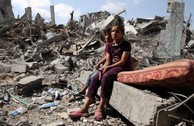
Gaza Community Mental Health Program’s (GCMHP) Deputy Director General for Professional Affairs Taysir Diab Thursday said around 51% of Gaza’s children and 31% of its adults suffer Post-Traumatic Stress Disorder as a result to the latest Israeli mass attack on the besieged Gaza Strip.
These results were presented following a series of activities organized by the program to test the psychological condition and mental health of Gaza’s community; including children and adults.
According to WAFA Palestinian News & Info Agency, Diab along with Head of External Affairs and Resources Development Department Husam El-Nounou met with a delegation from the GIZ, which included the Regional Director of GIZ Rudolf Rogg, accompanied with GIZ Gaza-Representative Wael Safi.
The meeting, held in the GCMHP’s headquarters in Gaza, aimed at strengthening the means of joint cooperation between the GCMHP and the GIZ.
GCMHP’s Director General Yasser Abu Jamei warmly welcomed the visiting delegation, giving a brief about key activities and services provided by the GCMHP to the Palestinian community through its therapeutic and psychological interventions, in addition to its advocacy efforts, and developing the skills of professionals working in the field of community mental health.
Showing evidence and statistics collected from research and studies, Abu Jamei reaffirmed the need to offer the Palestinian people access to many psycho social and mental health services.
GCMHP’s Director General stated that GCMHP has bought a piece of land on which its permanent headquarter, funded by the Islamic Development Bank, will be built, and it will include Gaza Community Centre and departments affiliated with the GCMHP.
Diab illustrated the reasons why a great deal of men didn’t participate in the community mental health activities carried out by GCMHP, the most important of which was the excessive anger that this segment of the society is feeling because they are homeless until now, in addition to the feeling of shame for appearing in a weaker position.
The high percentage of Palestinian families in Gaza that is suffering from mental and psychological issues is not a new topic, nor a surprising one. According to Save the Children, “Homelessness and repeated exposure to violence, coupled with soaring unemployment for parents and limited mental health support, have prevented children from recovering from the mental trauma of war.”
Save the Children CEO Justin Forsyth said in a statement, 'Many children in Gaza have now lived through three wars in the past seven years, the last one notable for its brutality. They are emotionally and, in some cases, physically shattered.”
According to the organization’s report, “An average of 75% of children surveyed experience unusual bedwetting regularly. In one area, al-Shoka, nearly half the children interviewed wet the bed every night. Up to 89% of parents reported that their children suffer consistent feelings of fear, while more than 70% of children said they worried about another war. On average seven out of 10 children interviewed suffer regular nightmares.”
These results were presented following a series of activities organized by the program to test the psychological condition and mental health of Gaza’s community; including children and adults.
According to WAFA Palestinian News & Info Agency, Diab along with Head of External Affairs and Resources Development Department Husam El-Nounou met with a delegation from the GIZ, which included the Regional Director of GIZ Rudolf Rogg, accompanied with GIZ Gaza-Representative Wael Safi.
The meeting, held in the GCMHP’s headquarters in Gaza, aimed at strengthening the means of joint cooperation between the GCMHP and the GIZ.
GCMHP’s Director General Yasser Abu Jamei warmly welcomed the visiting delegation, giving a brief about key activities and services provided by the GCMHP to the Palestinian community through its therapeutic and psychological interventions, in addition to its advocacy efforts, and developing the skills of professionals working in the field of community mental health.
Showing evidence and statistics collected from research and studies, Abu Jamei reaffirmed the need to offer the Palestinian people access to many psycho social and mental health services.
GCMHP’s Director General stated that GCMHP has bought a piece of land on which its permanent headquarter, funded by the Islamic Development Bank, will be built, and it will include Gaza Community Centre and departments affiliated with the GCMHP.
Diab illustrated the reasons why a great deal of men didn’t participate in the community mental health activities carried out by GCMHP, the most important of which was the excessive anger that this segment of the society is feeling because they are homeless until now, in addition to the feeling of shame for appearing in a weaker position.
The high percentage of Palestinian families in Gaza that is suffering from mental and psychological issues is not a new topic, nor a surprising one. According to Save the Children, “Homelessness and repeated exposure to violence, coupled with soaring unemployment for parents and limited mental health support, have prevented children from recovering from the mental trauma of war.”
Save the Children CEO Justin Forsyth said in a statement, 'Many children in Gaza have now lived through three wars in the past seven years, the last one notable for its brutality. They are emotionally and, in some cases, physically shattered.”
According to the organization’s report, “An average of 75% of children surveyed experience unusual bedwetting regularly. In one area, al-Shoka, nearly half the children interviewed wet the bed every night. Up to 89% of parents reported that their children suffer consistent feelings of fear, while more than 70% of children said they worried about another war. On average seven out of 10 children interviewed suffer regular nightmares.”
23 july 2015
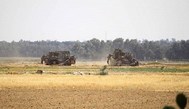
Israeli Occupation Forces (IOF) advanced a limited distance in Palestinian lands to the east of Khan Younis City in southern Gaza on Thursday.
Local sources told the PIC reporter that several Israeli military vehicles advanced into lands to the southeastern outskirts of the city in al-Umour district and started leveling of lands.
The Israeli forces opened machinegun fires at random and leveled lands during the incursion. No casualties have been reported.
On Wednesday, Israeli soldiers opened intensive machinegun fire at Palestinian farmers and fishermen whereas Israeli military vehicles advanced limited area into northern Gaza Strip.
The forces stationed at Central Gaza also fired their machineguns at Palestinian farmers forcing them to leave their farms, a field monitor revealed.
Israeli gunboats as well started shooting at Gazan fishing boats with no casualties reported. Besides, four Israeli bulldozers advanced a 50-meter distance in northern Beit Lahia in the northern blockaded enclave.
The attack is another episode in the series of Israeli daily violations of the Cairo-brokered truce accord signed in the wake of last summer’s offensive on the besieged coastal enclave, which killed over 2,300 Palestinians, mostly civilians.
Local sources told the PIC reporter that several Israeli military vehicles advanced into lands to the southeastern outskirts of the city in al-Umour district and started leveling of lands.
The Israeli forces opened machinegun fires at random and leveled lands during the incursion. No casualties have been reported.
On Wednesday, Israeli soldiers opened intensive machinegun fire at Palestinian farmers and fishermen whereas Israeli military vehicles advanced limited area into northern Gaza Strip.
The forces stationed at Central Gaza also fired their machineguns at Palestinian farmers forcing them to leave their farms, a field monitor revealed.
Israeli gunboats as well started shooting at Gazan fishing boats with no casualties reported. Besides, four Israeli bulldozers advanced a 50-meter distance in northern Beit Lahia in the northern blockaded enclave.
The attack is another episode in the series of Israeli daily violations of the Cairo-brokered truce accord signed in the wake of last summer’s offensive on the besieged coastal enclave, which killed over 2,300 Palestinians, mostly civilians.
22 july 2015
|
|
Last summer's 51-day Israeli offensive on the Gaza Strip resulted in the death of over 2,200 Palestinians and wounded around 11,000 others.
According to the latest statistics of the Palestinian ministry of health, the number of the dead included 302 women and 544 children. Regarding the wounded, the ministry said that the number included 5,260 males, 2,366 females and 3,258 children. The ministry also said that around 5,000 Palestinians wounded in the last three Israeli offensives on the Gaza Strip currently suffer from lifelong disabilities, including at least 1,000 who lost one or more limbs in the last offensive. Gaza's Paralysis and Artificial Limbs Centre, which is run by the Municipality |
of Gaza and supported by the Red Cross, offers its services to the people who lost their limbs, but is unable to give help to even half of those in need.
Many people suffering from limb loss are obliged to travel abroad for treatment, inevitably with the closure of the crossings, which have been closed since 2006 closed due to the Israeli-Egyptian siege on the Strip.
During the offensive, Israeli forces targeted more than 20 hospitals, clinics and healthcare centres.
The Palestinian ministry of agriculture said that the losses in the agricultural sector were estimated at $550m as a result of the Israeli offensive.
Awqaf ministry said that the Israeli forces targeted 214 mosques along the Strip. It said that 64 of these were completely destroyed and 150 were partially destroyed.
Gaza's Fishermen Syndicate also said that around 4,000 fishermen, feeding around 50,000 people, were affected, with losses estimated at $6m.
Regarding unemployment, a statement issued by the Palestinian Labourer Unions to mark the first anniversary of the offensive said that 200,000 workers are currently unemployed, meaning that an estimated 900,000 people have no source of food or income.
Many people suffering from limb loss are obliged to travel abroad for treatment, inevitably with the closure of the crossings, which have been closed since 2006 closed due to the Israeli-Egyptian siege on the Strip.
During the offensive, Israeli forces targeted more than 20 hospitals, clinics and healthcare centres.
The Palestinian ministry of agriculture said that the losses in the agricultural sector were estimated at $550m as a result of the Israeli offensive.
Awqaf ministry said that the Israeli forces targeted 214 mosques along the Strip. It said that 64 of these were completely destroyed and 150 were partially destroyed.
Gaza's Fishermen Syndicate also said that around 4,000 fishermen, feeding around 50,000 people, were affected, with losses estimated at $6m.
Regarding unemployment, a statement issued by the Palestinian Labourer Unions to mark the first anniversary of the offensive said that 200,000 workers are currently unemployed, meaning that an estimated 900,000 people have no source of food or income.

Shihda Abu Rock, the head of Khuzaa municipality, affirmed that the humanitarian conditions in his town, east of Khan Younis, are still disastrous after a whole year since the Israeli brutal aggression on the Gaza Strip.
He told the PIC that the Israeli aggression destroyed 43% of the town houses, completely or partially, in addition to razing six mosques and spacious agricultural lands, let alone the millions of dollars’ worth of damage.
Abu Rock added: "Khuzaa town was subjected to massive destruction during the Israeli aggression; the Israeli Occupation Forces (IOF) carried out a bloody massacre in the town."
Abu Rock highlighted that the economic losses in Khuzaa exceeded 65 million dollars, and stressed that the reconstruction process is at a standstill which exacerbated the suffering of the town inhabitants who reside on the ruins of their destroyed houses or in caravans that lack the basic human needs.
He also pointed out that his municipality is keen on providing its services to the citizens in order to alleviate their suffering.
The municipality's headquarters was destroyed during the Israeli summer aggression and it is currently working from a temporary headquarters, he elaborated.
Abu Rock described what happened in Khuzaa as part of the systematic destruction process and the collective punishment policy pursued by the IOF in a failed attempt to subdue the Palestinian people.
He finally stressed the importance of mobilizing all efforts to support and reconstruct the town, and called for prosecuting the Israeli war criminals according to the International Law.
He told the PIC that the Israeli aggression destroyed 43% of the town houses, completely or partially, in addition to razing six mosques and spacious agricultural lands, let alone the millions of dollars’ worth of damage.
Abu Rock added: "Khuzaa town was subjected to massive destruction during the Israeli aggression; the Israeli Occupation Forces (IOF) carried out a bloody massacre in the town."
Abu Rock highlighted that the economic losses in Khuzaa exceeded 65 million dollars, and stressed that the reconstruction process is at a standstill which exacerbated the suffering of the town inhabitants who reside on the ruins of their destroyed houses or in caravans that lack the basic human needs.
He also pointed out that his municipality is keen on providing its services to the citizens in order to alleviate their suffering.
The municipality's headquarters was destroyed during the Israeli summer aggression and it is currently working from a temporary headquarters, he elaborated.
Abu Rock described what happened in Khuzaa as part of the systematic destruction process and the collective punishment policy pursued by the IOF in a failed attempt to subdue the Palestinian people.
He finally stressed the importance of mobilizing all efforts to support and reconstruct the town, and called for prosecuting the Israeli war criminals according to the International Law.

Minister of Public Works and Housing, Mufid Mohammed al-Hasayna, announced today that the reconstruction of Gaza had begun and would not be halted, stating that the next few days would see a huge effort to reconstruct the houses which were completely destroyed during the 2014 Israeli aggression on the Strip.
Al-Hasayna said in a press conference that reconstruction had begun in the flattened Sheja’iya neighbourhood of the Gaza Strip. He said: “We announce today the true reconstruction of the Gaza Strip. We will not turn from our responsibility, and we will continue our work until all homes destroyed by Israel are rebuilt”.
He stated that teams of engineers and architects in the Ministry of Public Works and Housing were working day and night with the owners of the affected homes, and that he had given orders to his staff to facilitate all services necessary and to speed up any transactions with civilians.
He thanked Saudi Arabia, Qatar, Kuwait, Jordan, Egypt and other Arab nations for their efforts to support the Palestinian people and the reconstruction project in Gaza.
Al-Hasayna commended the strength and patience of the Palestinian people and the steadfastness of the owners of destroyed houses.
Al-Hasayna said in a press conference that reconstruction had begun in the flattened Sheja’iya neighbourhood of the Gaza Strip. He said: “We announce today the true reconstruction of the Gaza Strip. We will not turn from our responsibility, and we will continue our work until all homes destroyed by Israel are rebuilt”.
He stated that teams of engineers and architects in the Ministry of Public Works and Housing were working day and night with the owners of the affected homes, and that he had given orders to his staff to facilitate all services necessary and to speed up any transactions with civilians.
He thanked Saudi Arabia, Qatar, Kuwait, Jordan, Egypt and other Arab nations for their efforts to support the Palestinian people and the reconstruction project in Gaza.
Al-Hasayna commended the strength and patience of the Palestinian people and the steadfastness of the owners of destroyed houses.

Several armored Israeli military vehicles carried out, earlier on Wednesday, a limited invasion into Palestinian agricultural lands, north of Beit Lahia, in the northern part of the Gaza Strip. Army also fired on farmers and their lands, in central Gaza.
The WAFA News Agency said four tanks and three armored bulldozers, stationed in a military base across the border fence, advanced at least 150 meters into Palestinian agricultural lands.
The military bulldozers then bulldozed and uprooted agricultural lands, and installed sand barriers while firing rounds of live ammunition at homes and property in the area.
In addition, soldiers stationed on military towers near the border fence, in central Gaza, fired live round agricultural lands, east of the al-Maghazi refugee camp, forcing the farmers to leave their land, in order to avoid further army fire, and escalation.
The Israeli army and the navy conduct daily violations against the Palestinians, their homes, lands and property in different parts of the coastal region.
On Tuesday at dawn, two Palestinian fishers were wounded after Israeli navy ships opened fire on a number of fishing boats in Gaza waters, near Beit Lahia.
The WAFA News Agency said four tanks and three armored bulldozers, stationed in a military base across the border fence, advanced at least 150 meters into Palestinian agricultural lands.
The military bulldozers then bulldozed and uprooted agricultural lands, and installed sand barriers while firing rounds of live ammunition at homes and property in the area.
In addition, soldiers stationed on military towers near the border fence, in central Gaza, fired live round agricultural lands, east of the al-Maghazi refugee camp, forcing the farmers to leave their land, in order to avoid further army fire, and escalation.
The Israeli army and the navy conduct daily violations against the Palestinians, their homes, lands and property in different parts of the coastal region.
On Tuesday at dawn, two Palestinian fishers were wounded after Israeli navy ships opened fire on a number of fishing boats in Gaza waters, near Beit Lahia.
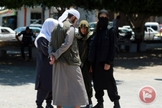
Salafi groups in the Gaza Strip threatened, on Monday, to fire rockets at Israel in response to what they called “Hamas crimes and conspiracies” against Salafis living in the region.
The threat came in reaction to the arrest of militants suspected of targeting members of the armed wings of Hamas and Islamic Jihad Sunday with a series of bombings on Sunday.
According to Ma'an, the Salafi groups argued in a statement that Hamas' security services were utilizing the recent attacks "to justify its arrest campaign” as an excuse for disproportionate targeting of Salafis.
"The Salafis have decided to respond to these crimes and these blows dealt by Hamas by pointing rockets towards the occupation (Israel) and carrying out reprisals," the statement read.
“Hamas authorities raided homes of Salafi militants and carried out an arrest campaign hours after the explosions took place, considering that the explosions targeting leaders of the al-Qassam and al-Quds Brigades were ‘deliberate,'" the statement said, referring to the armed wings of Hamas and Islamic Jihad respectively.
The groups added that at least 12 Salafi members had been arrested in the last few hours.
"The results will be catastrophic, will benefit no one, and it will be Hamas who shoulders the responsibility," their statement said.
The threat comes amid a power struggle between Hamas and smaller extremist groups, including Salafis in Gaza, which is home to 1.8 million people and has been ravaged by three wars with Israel in six years. On Sunday, five near-simultaneous explosions targeted members of the armed branches of Hamas and Islamic Jihad.
There was no immediate claim of responsibility for the blasts that rocked an area in Gaza City. A series of such attacks in recent months is suspected to have been carried out by Salafis, some of whom claim links with the Islamic State group, although experts have expressed doubts over whether there are any true ties between them.
While Israeli leadership has championed alarm over an alleged spread of IS into the occupied West Bank and Gaza Strip, as of June 84 percent of Palestinians viewed IS as a radical group that does not represent true Islam, according to results of a poll conducted by the Palestinian Center for Policy and Survey Research. There has been no confirmation from IS itself that it has a presence in Gaza.
In June, video footage alleged to be from an IS stronghold in Syria showcased a public challenge by the group against Hamas' power in Gaza, accusing the Gazan leadership of failing to enforce stringent religious law in the strip.
Salafi groups have claimed in recent weeks that around 100 of their members or supporters were behind bars. They also criticize Hamas for what they see as its lack of zeal in enforcing Islamic law as well as for its truce with Israel since last year's war in Gaza.
Experts have warned that the appeal of extremist groups may be growing, particularly among Gaza's disaffected youth who have been particularly hard hit by conflict, grinding poverty and soaring unemployment and feel let down by traditional Palestinian nationalist movements.
Growing extremism has led some to renew their call for an easing of the crippling Israeli blockade against the Gaza Strip in hopes that conditions will improve. Gaza's border with Egypt also remains strictly controlled.
The threat came in reaction to the arrest of militants suspected of targeting members of the armed wings of Hamas and Islamic Jihad Sunday with a series of bombings on Sunday.
According to Ma'an, the Salafi groups argued in a statement that Hamas' security services were utilizing the recent attacks "to justify its arrest campaign” as an excuse for disproportionate targeting of Salafis.
"The Salafis have decided to respond to these crimes and these blows dealt by Hamas by pointing rockets towards the occupation (Israel) and carrying out reprisals," the statement read.
“Hamas authorities raided homes of Salafi militants and carried out an arrest campaign hours after the explosions took place, considering that the explosions targeting leaders of the al-Qassam and al-Quds Brigades were ‘deliberate,'" the statement said, referring to the armed wings of Hamas and Islamic Jihad respectively.
The groups added that at least 12 Salafi members had been arrested in the last few hours.
"The results will be catastrophic, will benefit no one, and it will be Hamas who shoulders the responsibility," their statement said.
The threat comes amid a power struggle between Hamas and smaller extremist groups, including Salafis in Gaza, which is home to 1.8 million people and has been ravaged by three wars with Israel in six years. On Sunday, five near-simultaneous explosions targeted members of the armed branches of Hamas and Islamic Jihad.
There was no immediate claim of responsibility for the blasts that rocked an area in Gaza City. A series of such attacks in recent months is suspected to have been carried out by Salafis, some of whom claim links with the Islamic State group, although experts have expressed doubts over whether there are any true ties between them.
While Israeli leadership has championed alarm over an alleged spread of IS into the occupied West Bank and Gaza Strip, as of June 84 percent of Palestinians viewed IS as a radical group that does not represent true Islam, according to results of a poll conducted by the Palestinian Center for Policy and Survey Research. There has been no confirmation from IS itself that it has a presence in Gaza.
In June, video footage alleged to be from an IS stronghold in Syria showcased a public challenge by the group against Hamas' power in Gaza, accusing the Gazan leadership of failing to enforce stringent religious law in the strip.
Salafi groups have claimed in recent weeks that around 100 of their members or supporters were behind bars. They also criticize Hamas for what they see as its lack of zeal in enforcing Islamic law as well as for its truce with Israel since last year's war in Gaza.
Experts have warned that the appeal of extremist groups may be growing, particularly among Gaza's disaffected youth who have been particularly hard hit by conflict, grinding poverty and soaring unemployment and feel let down by traditional Palestinian nationalist movements.
Growing extremism has led some to renew their call for an easing of the crippling Israeli blockade against the Gaza Strip in hopes that conditions will improve. Gaza's border with Egypt also remains strictly controlled.
21 july 2015
|
|
Israeli navy ships opened live fire,
on Tuesday at dawn, on a number of Palestinian fishing boats in Beit
Lahia, in the northern part of the Gaza Strip, wounding two fishers, and
kidnapped two including one of the wounded, before towing a boat to the
Ashdod Port.
Ahmad Ismael Sharafi, 20 years of age, was shot with a live round in the back, and several rubber-coated metal bullets in his arm, and was moved to the Shifa Medical Center in Gaza, suffering a moderate injury. The two kidnapped fishers were released approximately at six in the evening, while one of them was moved to a medical center for treatment of wounds resulting from the Israeli attack, the Union for Agricultural Work Committees has reported. On Monday evening, the navy attacked a fishing boat belonging to Yousef Fayez Barakat, 22 years of age, and kidnapped him, along with Haitham Tareq Bakr, 25. |
The Israeli Navy conducts ongoing assaults and violations against Gaza fishers and their boats, in Palestinian territorial waters, and even close to shore or while docked on shore.
The Palestinian Center for Human Rights (PCHR) has reported that the Navy carried out 51 shooting attacks, invasions and kidnappings in the besieged coastal region, in May alone; this included 41 shooting attacks that led to nine injuries.
While Israel continues to claim “easing restrictions,” and easing the deadly siege on Gaza, the Palestinians continue to face daily assaults and violations in the sea, and in their own lands close to the border fence, where Israel enforces what it calls a “security buffer zone,” denying the Palestinians access to their lands.
The attacks also include uprooting Palestinian lands, and opening fire on farmers, workers and homes in areas close to the border.
Israelis shoot, injure Gaza fisherman
Israeli forces have injured a Palestinian fisherman in a shooting off the coast of the besieged Gaza Strip, reports say.
Witnesses said on Tuesday that an unidentified young fisherman was seriously wounded when he was shot in the back and hand off the northwestern coast of Gaza City.
The sources said the fisherman, who seemed to be in his early 20s, was taken to the al-Shifa hospital, where officials reportedly said he was in critical condition.
However, an Israeli military spokeswoman said Tel Aviv was not aware of any injuries sustained by a Palestinian.
Attacks by Israeli forces on Palestinian fishermen in the Gaza Strip have increased since the Israeli war of summer 2014.
The rise in such instances of violence comes despite a ceasefire agreement reached between representatives of the Israeli regime and the Palestinian resistance movement Hamas following the war.
Under the truce, Tel Aviv agreed to increase the fishing area off the coast of Gaza to six nautical miles from the previous three nautical miles.
However, human rights organizations say the Israeli military has attacked Gazan fishermen a significant number of times since the end of the war.
In May alone, the Palestinian Center for Human Rights reported a total of 51 incidents of shooting, incursions into the coastal enclave, and arrests by Israeli forces.
Palestinian fishermen say Israeli forces often target their boats before they reach the agreed limit.
The Gaza Strip has been under an Israeli blockade since June 2007. The siege has resulted in a sharp decline in the standard of living for Palestinians and a rise in the level of unemployment and poverty.
The Palestinian Center for Human Rights (PCHR) has reported that the Navy carried out 51 shooting attacks, invasions and kidnappings in the besieged coastal region, in May alone; this included 41 shooting attacks that led to nine injuries.
While Israel continues to claim “easing restrictions,” and easing the deadly siege on Gaza, the Palestinians continue to face daily assaults and violations in the sea, and in their own lands close to the border fence, where Israel enforces what it calls a “security buffer zone,” denying the Palestinians access to their lands.
The attacks also include uprooting Palestinian lands, and opening fire on farmers, workers and homes in areas close to the border.
Israelis shoot, injure Gaza fisherman
Israeli forces have injured a Palestinian fisherman in a shooting off the coast of the besieged Gaza Strip, reports say.
Witnesses said on Tuesday that an unidentified young fisherman was seriously wounded when he was shot in the back and hand off the northwestern coast of Gaza City.
The sources said the fisherman, who seemed to be in his early 20s, was taken to the al-Shifa hospital, where officials reportedly said he was in critical condition.
However, an Israeli military spokeswoman said Tel Aviv was not aware of any injuries sustained by a Palestinian.
Attacks by Israeli forces on Palestinian fishermen in the Gaza Strip have increased since the Israeli war of summer 2014.
The rise in such instances of violence comes despite a ceasefire agreement reached between representatives of the Israeli regime and the Palestinian resistance movement Hamas following the war.
Under the truce, Tel Aviv agreed to increase the fishing area off the coast of Gaza to six nautical miles from the previous three nautical miles.
However, human rights organizations say the Israeli military has attacked Gazan fishermen a significant number of times since the end of the war.
In May alone, the Palestinian Center for Human Rights reported a total of 51 incidents of shooting, incursions into the coastal enclave, and arrests by Israeli forces.
Palestinian fishermen say Israeli forces often target their boats before they reach the agreed limit.
The Gaza Strip has been under an Israeli blockade since June 2007. The siege has resulted in a sharp decline in the standard of living for Palestinians and a rise in the level of unemployment and poverty.
20 july 2015
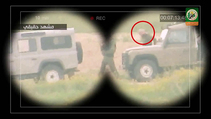
Video released by Hamas' military wing claims to show former chief of staff Benny Gantz during Operation Protective Edge but authenticy is in question.
A short video was released by Hamas' military wing Sunday night in which the organization claims to have filmed Israeli troops and even former IDF Chief Benny Gantz from across the Gaza border during Operation Protective Edge last summer.
The clip was edited by the propaganda wing of Hamas' military, in an attempt to display advanced intelligence capabilities against Israeli troops.
Hamas has released a series of videos and clips to mark one year since Operation Protective Edge, trying to present the organization's gains made during the war. The film's authenticity is in doubt however, due to the soldier's long sleeves, as well as the color of the leaves, that seem to indicate that the video was made in the fall, not during the summer operation.
Additionally, IDF protocol orders that all visits near the Gaza border be conducted with full protection including helmets and flak jackets, neither of which is worn by Gantz in the clip.
The officer marked in the video is similar in appearance to the former chief of staff, but his identity is difficult to prove due to the distance of the camera from its subject.
A short video was released by Hamas' military wing Sunday night in which the organization claims to have filmed Israeli troops and even former IDF Chief Benny Gantz from across the Gaza border during Operation Protective Edge last summer.
The clip was edited by the propaganda wing of Hamas' military, in an attempt to display advanced intelligence capabilities against Israeli troops.
Hamas has released a series of videos and clips to mark one year since Operation Protective Edge, trying to present the organization's gains made during the war. The film's authenticity is in doubt however, due to the soldier's long sleeves, as well as the color of the leaves, that seem to indicate that the video was made in the fall, not during the summer operation.
Additionally, IDF protocol orders that all visits near the Gaza border be conducted with full protection including helmets and flak jackets, neither of which is worn by Gantz in the clip.
The officer marked in the video is similar in appearance to the former chief of staff, but his identity is difficult to prove due to the distance of the camera from its subject.
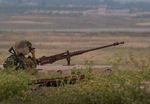
Israeli soldiers fired, on Monday morning, rounds of live ammunition, on a number of Palestinian farmers and homes, east of Gaza City.
Media sources said soldiers, stationed on military towers across the border fence east of the Zeitoun neighborhood, targeted farmlands and several homes.
The attack caused property damage but no injuries, while the farmers had to leave their lands, fearing additional Israeli military fire.
The army frequently attacks farmers and lands, close to the border fence, in the northern and eastern parts of the Gaza Strip, in addition to ongoing attacks against Palestinian fishers, and their boats, in Gaza territorial waters.
Media sources said soldiers, stationed on military towers across the border fence east of the Zeitoun neighborhood, targeted farmlands and several homes.
The attack caused property damage but no injuries, while the farmers had to leave their lands, fearing additional Israeli military fire.
The army frequently attacks farmers and lands, close to the border fence, in the northern and eastern parts of the Gaza Strip, in addition to ongoing attacks against Palestinian fishers, and their boats, in Gaza territorial waters.
Truce violations List of names Pictures of martyrs
Days: Aug: 26 - 25 - 24 - 23 - 22 - 21 - 20 - 19 - 18 - 17 - 16 - 15 - 14 - 13 - 12 - 11 - 10 - 9 - 8 - 7 - 6 - 5 - 4 - 3 - 2 - 1
July: 31 - 30 - 29 - 28 - 27 - 26 - 25 - 24 - 23 - 22 - 21 - 20 - 19 - 18 - 17 - 16 - 15 - 14 - 13 - 12 - 11 - 10 - 9 - 8
